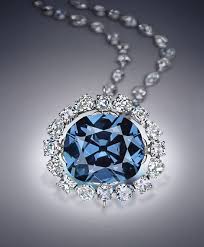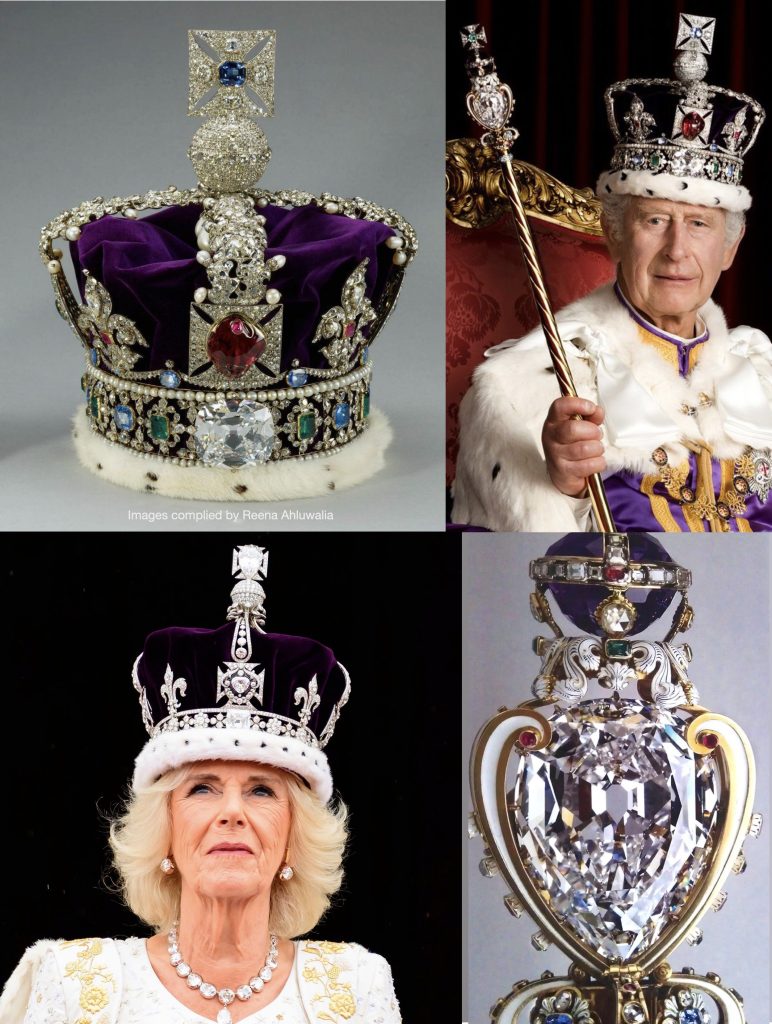
Diamond Investment – Pink Diamonds
What is the market for pink diamonds like? And what

The summer holidays are just ahead. I hope you have some exciting plans. If you’re heading to London, Paris, Washington DC or Dresden in Germany, here are the five museums where you can see epic diamonds – and maybe even take a selfie.
When Harry Winston donated the legendary Hope Diamond to the Museum of Natural History in Washington, D.C. in 1958, he sent the stone via the US Postal Service for $2.44. It was a seemingly risky move considering the 45.52-carat blue diamond has been valued by some at between $200 and $300 million; others say it’s priceless.
But Harry Winston believed that everyone should enjoy seeing magnificent diamonds and gemstones, so he donated the Hope Diamond and other famous stones to public institutions.
Millions of visitors line up every year to see the Hope Diamond, the centrepiece of the museum’s Hall of Gems. Until the Hope diamond came to light, most people didn’t realise that diamonds could be blue.

Lately, stunning blue diamonds have caught the public’s attention with record-breaking sales, including the 14.62 carat Oppenheimer blue diamond, which fetched $57.8 million in 2016. And it’s not even close to the size of the Hope blue diamond, which weighs a whopping 45.52 carats.
Note that the average carat weight of a diamond engagement ring is around one carat, so the Hope is almost 50 times bigger!
The Hope diamond was discovered in the 1600s in the famous Golconda mines in India and purchased by French merchant Jean Baptiste Tavernier, who sold it to King Louis XIV in 1668, where it remained until the French Revolution. It was stolen, reappeared in a new cut, changed hands several times and in 1911 was sold to heiress Evalyn Walsh McLean. When she died in 1947, it was bought by Harry Winston. Who then donated it to the Museum and Natural History in Washington DC.
The Hope diamond has a sordid history: It has been called a cursed diamond because several of its previous owners suffered death and tragedy while in possession of it. Fortunately, it’s now safely under glass and lock and can’t harm anyone.

The historic Tower of London’s Jewel House has been newly restored to give visitors a closer look at its centrepiece.
When they are brought out for historic events, such as the recent coronation of King Charles, it’s a reminder of the lavish royal pomp and splendour of the British that has endured for centuries.
When it comes to royal jewels, nothing beats the Cullinan I, the massive 503 carat diamond that sits in the Royal Sceptre of the British Crown. This giant diamond was cut from the original Cullinan diamond, a 3,106 carat rough diamond found in South Africa in 1905, which still holds the record as the largest known rough diamond.
The Cullinan was presented to King Edward VII, who had it cut by the Asscher company into nine larger diamonds, which are still in the British Royal Collection.
The second largest is the Cullinan II, a 317-carat cushion-cut diamond set in the Imperial State Crown.
When we think of diamonds, we think of white or colourless.
But natural diamonds come in almost every colour of the rainbow. These are called fancy-coloured diamonds, and in top quality, they are remarkably rare. For every 10,000 white diamonds, only one is classified as fancy or with measurable colour. This is what makes the Aurora Pyramid of 296 fancy-coloured natural diamonds a phenomenon: the collection was assembled by passionate New York diamond collectors Alan Bronstein and Harry Rodman, who spent more than a decade searching for fancy-coloured diamonds in every possible shade.

The Aurora collection shows that there is always more to discover about natural diamonds.
In 2019, the Dresden Green Vault was the victim of a jewel heist worthy of a film.
Fortunately, the museum’s most famous diamond, the Dresden Green, was on display at New York’s Metropolitan Museum of Art at the time of the burglary. The thieves were immediately apprehended, but it took another year to find the missing jewels, which are now back on display at the museum
The 41-carat Dresden Green is a once-in-a-lifetime jewel.
Green diamonds are exceptionally rare and one of this size is considered a freak of nature. The green diamond was discovered in the historic Golconda mines in India in 1722 and became part of the royal court of Saxony.

Frederick the Great of Prussia loved the diamond and had it set in a hatpin, where it can still be seen today.

If Paris is on your itinerary this summer, be sure to visit the Apollo Gallery in the Louvre Museum to see the museum’s most impressive jewel.
The 141-carat Régent diamond, which, as a symbol of the power and wealth of the French monarchy, has adorned Emperor Napoleon Bonaparte’s sword and several royal crowns.
The stone was found in Golconda, India in 1698 and was originally purchased (some say stolen) by Sir Thomas Pitt, then governor of the British settlement of Madras. In 1717, he sold it to Duke Philippe d’Orléans, the French regent (hence the name), who added it to the collection of the French crown.
In 1792, during the French Revolution, the stone disappeared. A year later it was found hidden in the rafters of an attic and in 1800 it was purchased by Napoleon I. It was the centrepiece of royal crowns and regalia, and most recently adorned Empress Eugenie’s Greek-style diadem. It has been part of the Louvre collection since 1887.
The Louvre collection also houses the fabled Sancy, a 55.2 carat pale yellow, drop-shaped diamond that can be traced back 500 years to Charles the Bold. Pledged to fund wars, it was stolen and a loyal servant swallowed the stone rather than leave it to the thieves. Thankfully, it was later removed from his cadaver.
Wild stories, right? And definitely worth traveling for.
I wish you all a great holiday.
Best wishes
Trine

What is the market for pink diamonds like? And what

An old mine-cut diamond is reminiscent of the past when

Looking for an engagement ring that never goes out of

What is the actual work process of making a custom-made

Yes, you read that right. Diamonds can also have fillers.
During the past years, the use of diamonds as an investment and financial hedging tool has grown rapidly.
The reason is obvious: Diamond prices are always increasing. In the last 10-15 years, there’s been a huge interest in investing in colored diamonds, making prices for pink and blue diamonds rise by 400 %.
Read more about Investing in Diamonds













Stay informed about the captivating world of the diamond industry by signing up for our newsletter and receive exclusive insights and updates straight to your inbox.


Østerbrogade 226
Copenhagen Ø
TLF: 53532277
CVR: 40081321
Belgian phone no.: +32 485 00 58 42
Danish phone no.: +45 53 53 22 77
Email: trine@bylamm.com
![]()